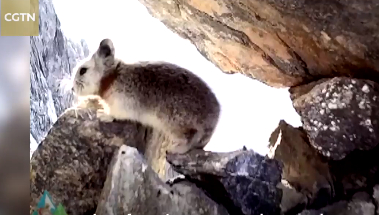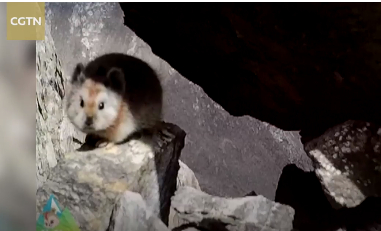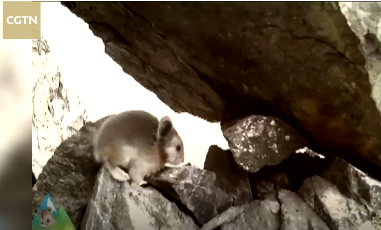
Animal
15:53, 14-Mar-2019
Make It Famous: Facts about China's 'magic bunny'
CGTN
01:08

Do you still remember that cute rabbit-like mammal that went viral on social media years ago? Since Li Weidong, a Chinese conservationist, spotted Ili Pika in China's Xinjiang Uygur Autonomous Region in 1983, the animal with round ears and short limbs that live in the Tianshan Mountains has been gaining more attention from the public.

Ili Pika /CGTN
Ili Pika /CGTN
But how much do you know about this furry animal from the pika family? Here are some Ili Pika facts for you!
1. The scientific name of the Ili Pika is Ochotona iliensis. It is a mammal that was discovered in northwestern China.
2. The adult Ili Pika can grow to 8 inches tall and weigh up to 205 grams.
3. They mainly feed on herbs, grasses and other plants on mountains.

Ili Pika /CGTN
Ili Pika /CGTN
4. The Ili Pika can tolerate cold weather and they don't hibernate.
5. The lifespan for the Ili Pika is up to 7 years.
6. It likes to inhabit rocky areas, including mountain peaks and inland cliffs.

Ili Pika /CGTN
Ili Pika /CGTN
7. The species is listed as "Endangered" in China, and according to International Union for Conservation of Nature Red List, the population of this endangered animal is decreasing due to livestock farming and ranching as well as climate change and severe weather.

Ili Pika /CGTN
Ili Pika /CGTN
8. The Ili Pika lives in holes between rocks at an altitude of 2,800m (9, 186ft) to 4,000m.
Ili Pika protection
It's estimated that the population of Ili Pika is less than 1,000. With the decline of grasslands in the Tianshan Mountains, herdsmen have to walk their herds in higher mountain ranges, attracting more predators to Ili Pikas. Habitat loss has also pushed the species to the brink of extinction.
In 2015, Li Weidong set up a workshop on the protection and conservation of the Ili Pika and established two sanctuaries for the animal with the help of the local government. Many local herdsmen also volunteer to help set up cameras and prevent poaching.
For more information about Ili Pika, you can read:
Make It Famous
During this year's Two Sessions, a political advisor proposed to update the List of Wild Animals under State Priority Conservation, which has been changed only once in 30 years. Although the country has made great achievements in protecting endangered species such as the giant panda, Tibetan antelope and crested ibis in the last decades, human activities, resource utilization and climate change are contributing to the destruction of the habitats of certain animals.
In this series, we will learn about the unfamiliar endangered animals living in China and how people and organizations in China are dedicated to protecting them.
(Cover image via CGTN)
(If you want to contribute and have specific expertise, please contact us at nature@cgtn.com.)

SITEMAP
Copyright © 2018 CGTN. Beijing ICP prepared NO.16065310-3
Copyright © 2018 CGTN. Beijing ICP prepared NO.16065310-3